Kids make great citizen scientists
Researchers are making important discoveries, thanks to help from people of all ages
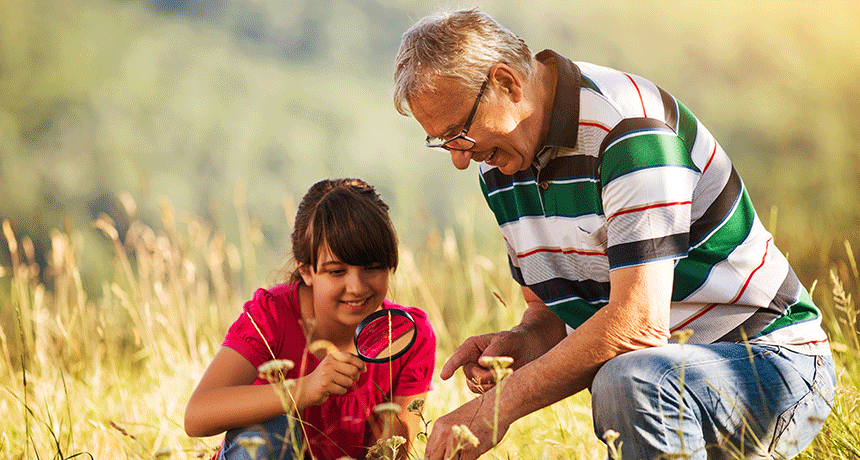
People of all ages can be citizen scientists. All that’s needed is some curiosity and the ability to follow instructions.
LittleBee80/istockphoto
One evening last summer, 11-year-old Owen and his mom put on white suits and taped their rain boots to their pant legs. Then they each grabbed a wooden pole with a large white cloth attached to it and started dragging the tools through the trees and grass in their Wisconsin backyard.
They were looking for ticks. Owen’s mom, Amy Prunuske, teaches microbiology and immunology at the Medical College of Wisconsin in Wausau. She studies diseases that ticks carry. Owen, though, is what’s known as a citizen scientist. Citizen scientists are people — young or old — who help collect data for research projects. They usually aren’t professional scientists, or if they are, not in the field of the project. Still, their work can be incredibly important.
Citizen scientists can help trained scientists gather data from all over the world — even from space. They can provide new ideas and new ways of thinking.
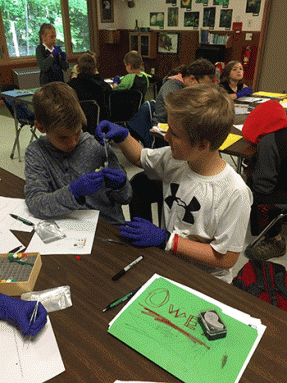
Kids often make great citizen scientists because they tend to be curious and good at following precise directions. Sometimes they’re even better at these things than adults. And schools are convenient places for scientists to recruit big groups of helpers. As a bonus, citizen science often gets kids more excited about science.
That day in the backyard, Owen found two black-legged ticks, animals so tiny they’re often hard to see. He and his mom took the pests to a summer program she was teaching. There, he and other young citizen scientists tested the ticks for the bacterium that causes Lyme disease. This illness causes fever and headaches and can make a person extremely tired. People can get it from the bite of a black-legged tick, also known as a deer tick.
“We want to test as many ticks as possible from different places in Wisconsin and Minnesota to better understand how many ticks are carrying the bacteria that can make people get sick,” Prunuske says. Those states are hotbeds of black-legged ticks and Lyme disease.
The tick project is just one of many, many citizen-science programs. And kids are participating in many of them. Some are helping astronomers study the night sky. Others are working with marine biologists to develop robotic boats that can study marine mammals. Some are even giving data about the atmosphere to the National Aeronautics and Space Administration, or NASA. In each case, their work is helping scientists make new discoveries.
Plus, Owen and his classmates say, it’s a lot of fun.
Strength in numbers
Sometimes even the best technology isn’t as powerful as a lot of people working together. At NASA, for example, satellites help scientists study clouds. Cameras and other tools on those satellites do a great job of seeing clouds all over the planet. But most capture an image of one specific location at most twice a day.
“You’re not able to get a sense for what’s happening with the clouds in that location throughout the day,” says Jessica Taylor at NASA. But citizen scientists can fill those gaps, this physical scientist says. She leads the science education team at NASA Langley Research Center in Hampton, Va.
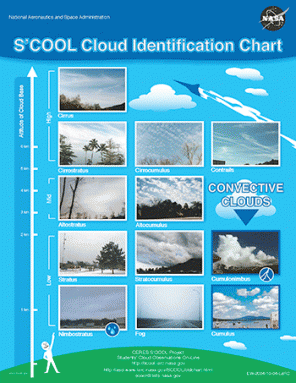
NASA collects data from citizen scientists through a project called S’COOL. That’s short for Students’ Cloud Observations On-Line. It’s recruited people from all around the world to observe clouds at lots of different times. All they have to do is look up, Taylor explains. They provide those reports to the project along with weather data. The large numbers of observations are helpful. NASA scientists use them to make sure they match satellite data. That way they know whether satellites are working correctly.
“It’s crowd-sourcing at its finest,” Taylor says. “You might have one student say, I think it’s 50 percent cloud cover, and another say 75 percent, and another say, no, it’s 40 percent.” But when you combine everyone’s observations over time, all those estimates average out to create more and more accurate information.
Also, some types of satellites “see” differently than we do. For example, some satellites looking down at Earth can’t tell the difference between snow and a cloud. “Both are white and really cold,” Taylor explains. That can make it hard for the satellite sensors to tell them apart. But “on the ground, it would never be a question.” And this is where a human’s eyes can be better than a satellite’s.
Different ways of thinking
Citizen science takes advantage not just of many sets of eyeballs, but also of many minds.
When professional European scientists in Austria were trying to find how best to encourage people to use less energy, they partnered with student citizen scientists. The adult scientists had a long list of questions for people about how much energy they used. Right away, the students noticed some problems the adults hadn’t thought of. There were too many questions, the kids said. And some of those questions were too complicated.
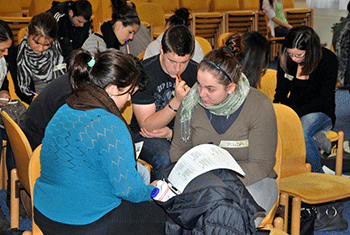
Kids can sometimes offer a new way of looking at an issue, bringing a new perspective, says Petra Siegele. She’s in charge of Sparkling Science. It’s a program of the Federal Ministry of Science, Research and Economy in Vienna, Austria. And it partners students with scientists, “So researchers come into different ways of thinking.”
That can be helpful when scientists get stuck and can’t think of new ways to approach a problem. In another Sparkling Science research project, professional scientists had students interview traditional bakers living in the mountains of Austria. The scientists were curious about how breadmaking techniques had changed over the last few generations. They wanted to figure out how new bakers might learn traditional breadmaking skills. Kids, the scientists found, were able to get more detailed and honest answers than adults had.
Helping out with research like this can also give students a new perspective on science. At the beginning of a project, kids often ask about the answer to a research question, says Jennifer Long. She’s coordinates education and outreach at the Center for Environmental Biology at the University of California, Irvine. Students are usually surprised — and excited — to find out that no one actually knows the answer, and that it’s their job to help make discoveries.
Waiting, waiting . . .
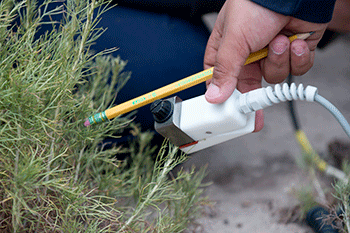
Sometimes, trying to find those answers can be frustrating. In California’s Crystal Cove State Park, students are helping researchers figure out the best way to bring back native plants, such as California sagebrush. Native plants can help protect habitat for wildlife. In the first year, the young citizen scientists decided to weed out non-native plants and put up fencing to keep out rabbits. The kids also learned how to measure plant growth very accurately and how to use a probe to measure moisture in the soil. These two factors were important for recognizing whether research techniques are successful.
Their initial data showed that fencing and weeding California sagebrush did make it healthier.
The next year, the students tested whether it was better to plant seedlings close to adult plants or farther away. They thought having adult plants nearby would help seedlings grow by providing shade and moisture. But this time, the results were the opposite of what the students had predicted. Adult shrubs had competed with the seedlings for water.
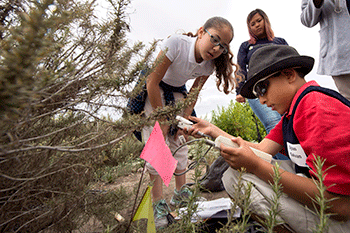
Some kids thought that meant that the project had failed. But it hadn’t. That’s because in science, unexpected results are helpful.
“At first, the students thought that the experiment failed because their hypothesis was rejected,” Long says. “But then,” she notes, “they realized that they did find very useful information” — both for scientists and for people who make decisions about the land.
The students decided to keep gathering data to see how far away seedlings need to be from adult plants. They won’t know the answer for another year. That’s another challenge of science, Siegele says. “You have to work a very long time to get results.” That can get tedious.
Waiting for results isn’t the only part of citizen science that can be a bit boring. For example, Prunuske notes, kids sometimes get tired of counting the number of legs on a tick. (Adult ticks, which can spread Lyme disease, have eight legs. Young ticks have only six.)
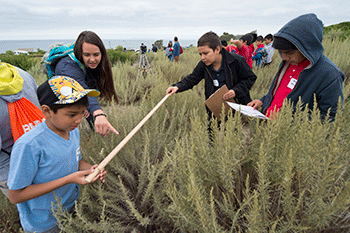
Long says that it can help keep students engaged in data collection if they remember that they’re finding the answer to a question — perhaps an important one. “Then they get really excited.” She says “that sustains them through the tedium of doing science.” (By the way, adult scientists can find repetitive data collection tedious, too. It’s just a price they pay to sometimes get important data.)
Another challenge for some students is the yuck factor. “They’re all pretty grossed out, at first, looking at the ticks,” Prunuske says. Once they get over their fear, they realize that working with these parasites is not so bad.
Future scientists
As a kid, Joanna Buckley wasn’t interested in science — until she had a chance to try it. That happened when she got a chemistry set for Christmas.
“Over the course of a few weeks, I’d completed every experiment. But in the process, I stained my parent’s dining room carpet with methyl-orange indicator and charred the kitchen worktop with the spirit burner,” she says. (Spirit is a term sometimes applied to alcohol.)
Now science is Buckley’s job. She does outreach for the chemistry department at the University of Sheffield in England. “I realize, first-hand, how important it is to have something or someone to show you why science is so great,” she says.
Citizen science takes the fun of experimenting a step further than Buckley’s at-home chemistry kit. That’s because these experiments are real, looking for novel answers.
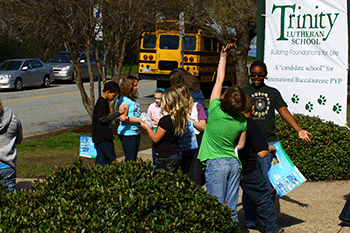
“What’s cool about citizen science versus a one-off experiment is that students get that this has a purpose,” Prunuske says. Students want to do a good job, she says, because they know scientists are going to use the new data in their own research.
Long agrees. “Kids like that it’s real. And they like that it’s important, that it matters.” Citizen-science projects have made big discoveries. One found a previously unknown galaxy cluster. Another project helped size up how much damage a big earthquake had caused in Japan. And one of the first citizen-science projects helped scientists learn where monarch butterflies go every winter.
Some adults worry about teens losing interest in science. That’s one reason they hope that fun, exciting citizen-science projects can keep them engaged, Long says. And she has some evidence that it’s working: “Last year, we did have a couple of students say: ‘I really think I want to be a scientist now.’”







